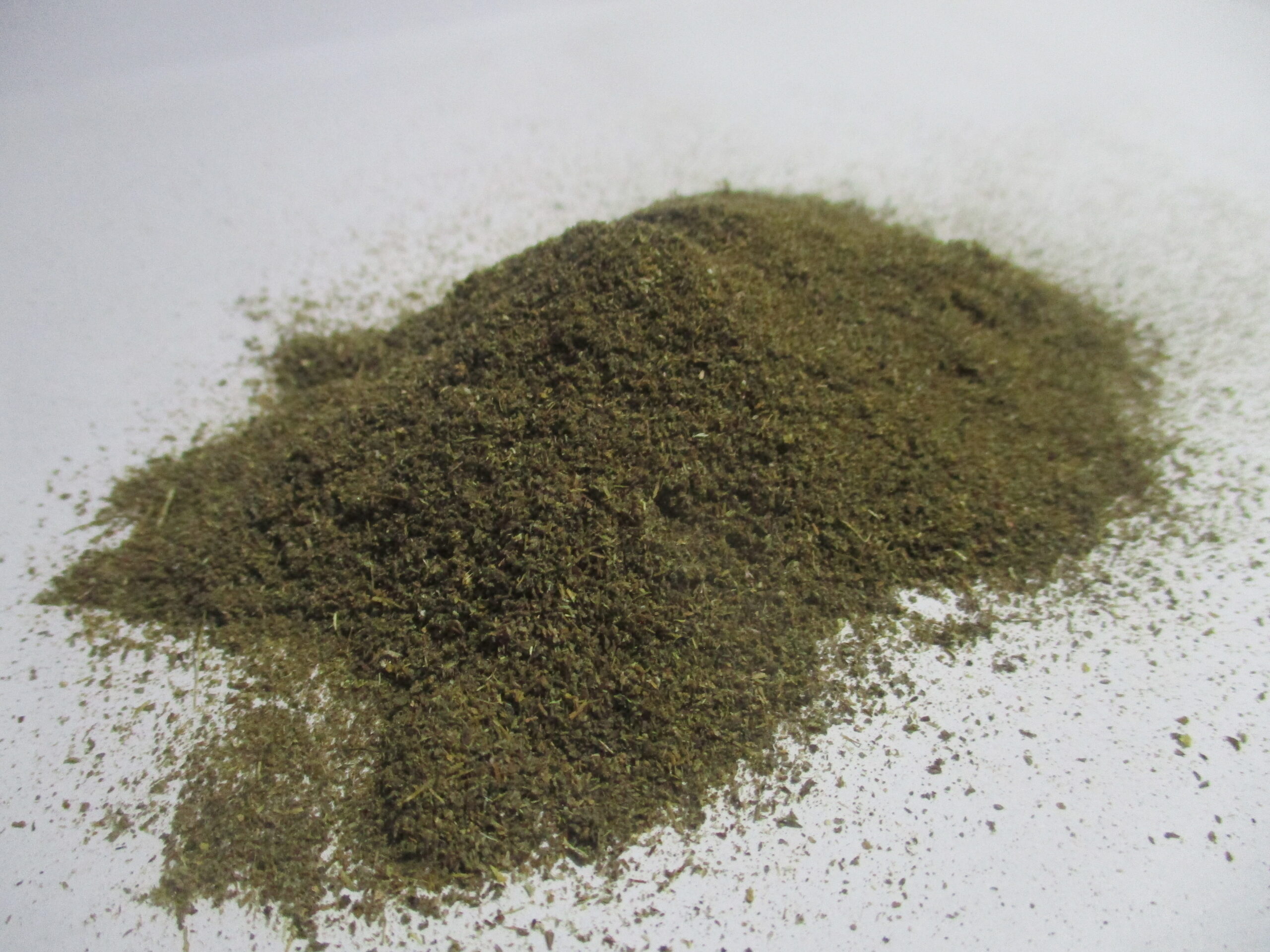Family: Asteraceae
Scientific names: Artemisia afra
Authority: Jacq. ex Willd.
Zulu names: umhlonyane, umhlonyane omncane
Other names: African wormwood, wild wormwood (English) wilde-als, wilde-alsem (Afrikaans) lanyana (Sotho) lengana (Tswana) armoise africaine (French)
Description: A. afra is an aromatic perennial shrub that can grow to about 2 m in height. It has soft textured leaves, yellow flowers, and three-angled and curved fruits covered with a silvery-white coating. The shrub is widely distributed in South Africa growing along the stream sides and forest margins
Uses:
- The leaves and twigs are used as a culinary herb and spice, for adding aroma and flavour to food.
- The leaves are used to make an infusion that is taken as tea.
- The leaf infusion is taken to treat colds and flu.
- The leaves and twigs are administered as steam to treat colds, fever, flu, and headache.
- The leaves are mixed with Lippia javanica (umsuzwane) to treat cough, fever, and flu.
- The leaves are mixed with Tetradenia riparia (iboza) to treat respiratory ailments.
- The leaves are used to treat constipation.
- The leaves are used to get rid intestinal worms in children.
- The leaves are used to make a decoction that is taken as a blood purifier.
- The leaves are used to treat measles.
- The roots are used to treat pneumonia.
- The plant is used to treat boils, pimples, and mumps.
- The plant is used to make body lotion.
- The plant is used to treat aching teeth.
- The plant is used to treat colic in infants.
- The plant is used to treat a loss of appetite.
- The plant is used to manage diabetes and malaria.
Umhlonyane is often prepared in combination with alcohol, ginger, chamomile, thyme, rosemary, mint, Osmitopsis asteriscoides or Eucalyptus globulus.
You can buy umhlonyane on the IMTHI YESINTU SHOP:
Umhlonyane 100g Spice, Umhlonyane 70g Spice, Umhlonyane Refills, Umhlonyane 50g medicine powder, Umhlonyane 50g coarse fragments
Safety precaution
The use of traditional medicine in prescribed dosages will yield good results. Misuse and abuse may lead to complications. Speak to your doctor or a herbalist for the best outcomes. You can also visit the imithiyesintu website and social media or email: info@imithiyesintu.co.za to learn more about traditional medicine.
Reference and further reading:
- Bryant, A.T., 1966. Zulu medicine and medicine men. C. Struik, Cape Town (originally published in 1909 in the Annals of Natal Museum).
- Gelfand, M., Mavi, S., Drummond, R.B., Ndemera, B., 1985. The traditional medicinal practitioner in Zimbabwe. Mambo Press, Gweru, Zimbabwe.
- Gerstner, J., 1939. A preliminary checklist Zulu names of plants with short notes. Bantu Studies.
- Hilliard, O.M., 1977. Compositae in Natal. University of Natal Press, Pietermaritzburg, pp. 360–361.
- Hutchings, A. and Johnson, C.T., 1986. Glimpses of a Xhosa herbal. Veld & Flora 72, pp.59–62.
- Hutchings, A., Scott, A.H., Lewis, G. and Cunningham, A., 1996. Zulu medicinal plants. Natal University Press, Pietermaritzburg.
- Kokwaro, J.O., 1976. Medicinal plants of east Africa. East African Literature Bureau, Nairobi.
- Liu, N.Q., Van der Kooy, F. and Verpoorte, R., 2009. Artemisia afra: a potential flagship for African medicinal plants?. South African Journal of Botany, 75(2), pp.185-195.
- Roberts, M., 1990. Indigenous healing plants. Southern Book Publishers, Halfway House. Rood, B., 2008. Uit die veldapteek. Pretoria Boekhuis, Pretoria.
- Sotenjwa, Z., Viljoen, A., Combrinck, S. and Kamatou, G., 2023. Artemisia afra. In The South African Herbal Pharmacopoeia (pp. 83-105). Academic Press.
- Van Wyk, B.E. 2008. A review of Khoi-San and Dutch medical ethnobotany. Journal of Ethnopharmacology 119, pp. 331–341.
- Van Wyk, B.E., Van Oudtshoorn, B. and Gerike, N., 1997. Medicinal Plants of South Africa. Briza Publications, Pretoria. pp. 142.
- Watt, J.M. and Breyer-Brandwijk, M.G. 1962. Medicinal and poisonous plants of southern and eastern Africa, second edition. Livingstone, London.
- York, T., de Wet, H., and van Vuuren, S.F. 2011. Plants used for treating respiratory infections in rural Maputaland, KwaZulu Natal, South Africa. Journal of Ethnopharmacology 135, pp.696–710
